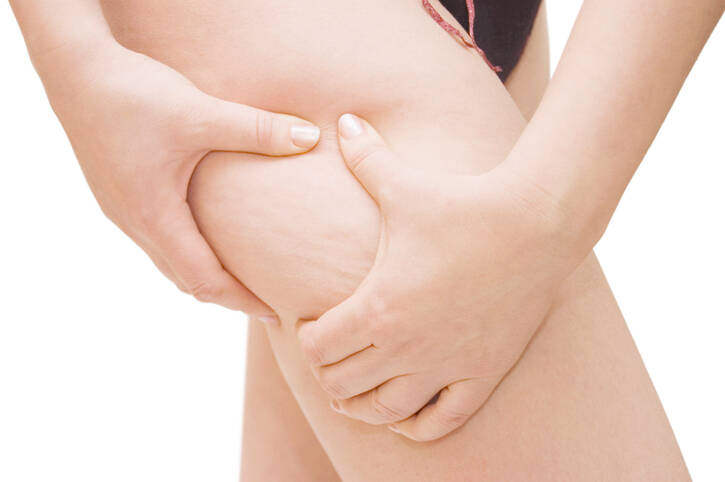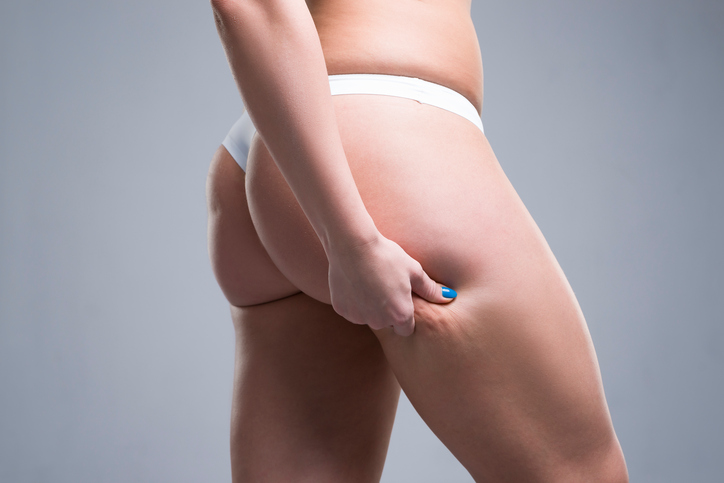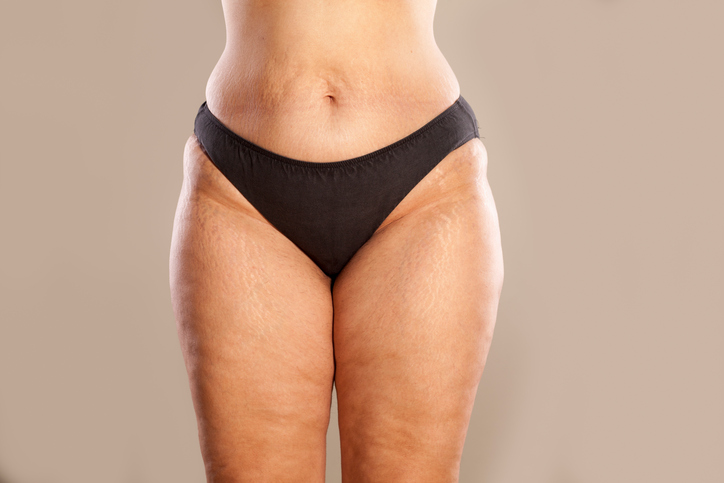Orange skin: why do I have orange skin on my thighs or buttocks (+ Stadiums)

Orange skin is mainly a cosmetic problem. It affects mostly women. It is aggravated by being overweight or obese, but it is not a prerequisite for developing it. The risk is inappropriate diet, lack of exercise and, of course, genetic predisposition.
Orange skin is a typical symptom for cellulite. This is a disease that plagues most women during their lifetime. Most often, cellulite occurs because of uneven and altered fat accumulation, especially in the hips, thighs and buttocks.
The changes involve the layer under the skin where degenerative and dystrophic damage takes place.
The cause is not overweight or obesity. It is caused by impaired circulation of blood, lymph and water retention.
However, there are several stages in the development of orange peel, which means that it is not always immediately recognisable and can start relatively unnoticed. Orange peel occurs in 9 out of 10 women. It is a relatively massive problem, but it can be corrected in some way.

Stages of cellulite:
- unevenness of the skin only appears during a test (the so-called pinch test, squeezing the skin between two fingers)
- unevenness is visible on the skin when the muscles are stretched
- visible unevenness on the skin, without affecting
- marked unevenness, swelling and soreness
Often there is a direct relationship between orange skin and diet. There are certain foods or foods whose excessive consumption can promote the development of orange skin.
For example, these are white bread, dumplings, mayonnaise, sugar, chips, cold cuts, excessive consumption of conventional oil, on which most foods are baked or fried, is also unhealthy. But also a lot of coffee and sugary drinks can be harmful. Instead, the healthiest alternative is plain water.
Obesity also has a big impact on orange skin. It increases the surface of the skin where the deformities can manifest. Therefore, women suffering from this symptom are advised to take regular exercise and exercise to reduce their weight.
However, it is not a panacea. The increase in the number and volume of fat cells in the subcutaneous layer is difficult to eliminate with conventional exercise. Orange skin sometimes occurs in men, but it affects women most often.

Cellulite is a disease that is accompanied by orange skin. It occurs only on certain parts of the body. These are mainly the thighs, buttocks, abdomen and hips.
Cellulitis under the skin causes dystrophy (degeneration and scarring of the affected tissue). The lumps that appear on the skin are not caused by unnecessary fat deposits. They are changes in the subcutaneous fatty tissue, which retains water in this tissue.
From a medical point of view, it is more of an aesthetic problem. A major risk for the development of cellulite and orange skin is the level of hormones in the blood. This is also why cellulite appears most often, for example, during puberty, pregnancy, menopause or if a woman is taking hormonal contraceptives.
Other problems include poor liver function, insufficient lymphatic and blood system function, excessive alcohol consumption or even smoking.
Sometimes hereditary predisposition is also a risk, but this is not always the case.

Risk factors for cellulite:
- Heredity
- hormonal disorders, imbalances
- hormonal contraceptives, treatment
- sedentary lifestyle, lack of exercise
- sedentary jobs
- tight clothing (reduced blood supply to the skin)
- stress
- alcohol
- caffeine
- smoking
- inappropriate diet (saturated fat), white bread, sugar
- vitamin and element deficiencies
- impaired circulation of blood and lymph in the skin
In cellulite, orange skin starts to appear at first only by touch, and later on even without squeezing the skin. If the irregularities are already gross, orange skin is practically untreatable. In the earlier stages, cellulite and its symptoms can be alleviated. This can be achieved by changing diet, healthier exercise, but also by various massages, sauna treatments or the application of special creams. It is a long-term treatment.
Diseases with symptom "Orange skins"
Related










